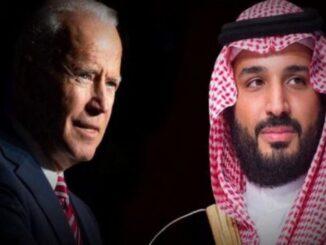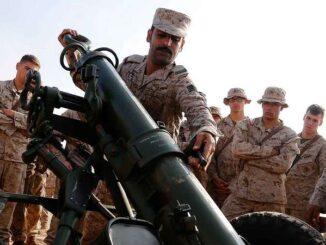
by Euan Harlow-Lawrence
At the beginning of August the United Arab Emirates announced it had commenced operations at the Barakah nuclear facility, the first nuclear power plant in the Arab world, raising a myriad of concerns and adding pressure to already tense regional ties. Over budget and behind schedule, Barakah encountered a slew of issues in its construction phase, including a claimed missile attack, and in the face of such regional volatility its future is uncertain. Threats to regional nonproliferation efforts, security, and environmental safety are all major factors of consideration in identifying potential fallout from pursuing a nuclear program.
The UAE has maintained that it only has peaceful intentions, agreeing not to reprocess spent fuel or enrich its own uranium. The country has signed up to the IAEA’s Additional Protocol, allowing the agency a significantly intrusive inspection capability. Defenders can also point to the UAE’s nuclear energy cooperation agreement signed with the US, which allows it to receive technical assistance and nuclear materials in exchange for limits on its program. However, it can be questioned whether the energy benefits of such a program are worth the associated risks given the UAE’s substantial oil and gas reserves, as well as its significant investments in alternative energy sources including solar and wind. There remains fierce opposition to the project, for example Qatar lodged a complaint with the IAEA in 2019, calling Barakah “a serious threat to the stability of the region and its environment.”
Barakah may be considered a setback for regional proliferation efforts, reinforcing the perception that prestige be placed and attached to nuclear technology. For nonproliferation progress to be made, nuclearization needs to be abandoned in this region. The tense political environment of the Gulf means nuclear energy is inherently more problematic, as any nuclear power provides a potential path to nuclear weapons. This in a region with a history of insecurity and mistrust regarding nuclear ambitions, for example:
- Algeria’s foray into nuclear research in the early 1990’s,
- Iraq’s operations of a covert nuclear weapons program which only ended following defeat in the 1991 Gulf War,
- Libya in 2003 renouncing its secret nuclear program in contravention to its obligations under the NPT, with its dismantlement in 2004,
- Iran, whose program has been under the gaze of the international community for decades, in 2002 admitted to nuclear facilities that were not declared to the IAEA,
- Israel’s widely believed possession of nuclear weapons.
Though the UAE has distanced itself from this type of behavior, could the state ever revoke its commitments to the NPT and move beyond a purely civilian program? Nuclear weaponry could certainly provide clout in the region amongst neighbouring heavyweights amid tense issues such as the ever-present Palestinian-Israeli conflict, ongoing civil wars in Syria and Libya tainted with proxies and international actors, the blockade of Qatar, and the worsening ideological conflict between Saudi Arabia and Iran playing out on many fronts. The UAE’s nuclear program puts pressure on neighbouring states to hasten their emerging nuclear programs, and increases the possibility of a nuclear arms race.
 The security of the Barakah plant itself is of significant importance, as nuclear facilities will always be potential targets for non-state actors and adversarial states. There is a history of attacks on nuclear sites in the Middle East in particular, often occurring during regional conflicts. Aerial assaults are one of many potential avenues of attack, there having been 13 such incidents on nuclear facilities in the Middle East, while internal sabotage and hacking are other very real threats. Scholar Paul Dorfman authored a report detailing key safety features Barakah’s reactors lack that are otherwise standard on new reactors built in Europe. These features include a core catcher to prevent the core of a reactor from breaching the containment building in the event of a meltdown, and containment reinforcements to shield against a radiological release resulting from aerial attack. These omissions of safety amplify operational risks and diminish crucial response capabilities in the event of an emergency.
The security of the Barakah plant itself is of significant importance, as nuclear facilities will always be potential targets for non-state actors and adversarial states. There is a history of attacks on nuclear sites in the Middle East in particular, often occurring during regional conflicts. Aerial assaults are one of many potential avenues of attack, there having been 13 such incidents on nuclear facilities in the Middle East, while internal sabotage and hacking are other very real threats. Scholar Paul Dorfman authored a report detailing key safety features Barakah’s reactors lack that are otherwise standard on new reactors built in Europe. These features include a core catcher to prevent the core of a reactor from breaching the containment building in the event of a meltdown, and containment reinforcements to shield against a radiological release resulting from aerial attack. These omissions of safety amplify operational risks and diminish crucial response capabilities in the event of an emergency.
Additionally, the 2019 Abqaiq-Khurais drone attack on Saudi oil facilities highlighted the vulnerability of energy infrastructure to such low-cost and accessible aerial weaponry. Given the U.A.E.’s regional ties, the possibility of a similar attack on the Barakah nuclear plant is not improbable. There is a need to identify threats to and security shortcomings of nuclear sites in terms of potential unmanned aerial attacks, particularly the Barakah facility.
Security of nuclear material transportation and storage are also of great concern, given that the UAE won’t be enriching its own materials nor does it have a long-term storage policy currently in place. This means there will be significant movement of materials in the Gulf as fuel rods and uranium are imported and high-level waste exported. Safeguarding the movement of these materials is no small task as incidents, thefts, and even the possibility of piracy create additional operational risks that could prove dire to the region’s stability and fragile environment.
Given the low chance but highly consequential event of environmental catastrophe, would the UAE and its Gulf neighbours have the ability to respond to such a situation? Given how concentrated the population centers are in the region, a significantly large number of people would be vulnerable in any emergency event. During the Fukushima disaster in 2011, the population living nearby could be easily evacuated inland, while the evacuation of Tokyo was seriously considered. A comparable evacuation effort along the UAE coast would be difficult, considering the lack of suitable locations to move affected communities. This hypothetical poses a number of logistical problems for emergency planners with no easy answers.
Following the UAE are a number of prospective Middle Eastern nuclear programs, including Egyptian and Saudi Arabian plans to build power plants and reactors. Saudi Arabia also plans to pursue a nuclear cooperation deal with the United States, and though safeguards against weapons development would be required, civilian cooperation with the country faces heavy opposition in Congress and amongst experts amid suspicion of ulterior motives. As the region moves into a new nuclear era, both ideological and physical conflicts are only further complicated. For the future at least, the risks and consequences of introducing more nuclear programs to the Middle East need to be seriously considered, and movements to support nonproliferation and disarmament efforts strengthened.



